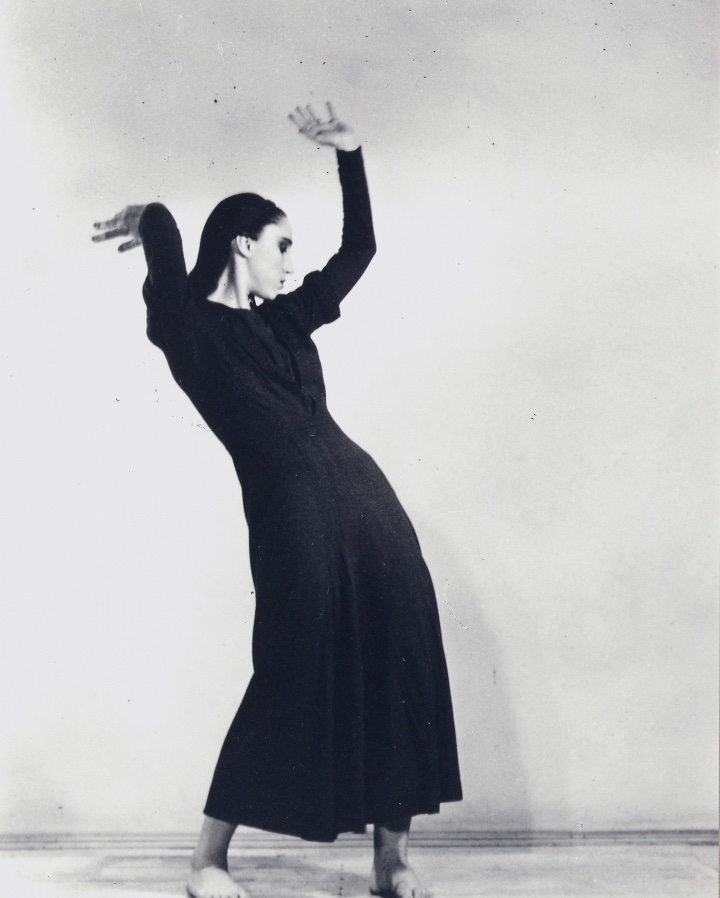Crossing the Borders of Dance

Border Crossings: Exile and American Modern Dance – an art exhibition, symposium, and a pair of dance performances – takes over several venues at UCSB and downtown this weekend in a multifaceted celebration of immigrant and BIPOC artists whose work challenges previous histories of dance to consider how war, inequality, and injustice shaped 20th century performance art. The presentations – co-created by UCSB professor Ninotchka Bennahum and former UCSB Art, Design & Architecture Museum director Bruce Robertson – are meant to demonstrate how exiled and marginalized artists shaped modern dance, giving voice to crucial issues of geopolitical circumstance and structural racism.
The concept of crossing borders — whether geographic or otherwise physical, or racial or gender, artistic and spiritual, and either by choice or by force – have become integral to the “modern” element of modern dance, said Bennahum. The new presentations amplify on and extend Bennahum and Robertson’s previous collaboration Radical Bodies: Anna Halprin, Simone Forti, and Yvonne Rainer in California and New York, 1955–1972.
“I was researching the relationship between war and contemporary performance,” Bennahum explained. “I was curious why we don’t look at dance through the trauma experienced by the body? Why do we see it only in terms of its aesthetic properties? Dance has a contemporary real-world edge to it, and these investigations of war and the refugee body, the exile body, the experience and nature of exile, very much define modern dance. That unlocked for me that we had to reconfigure how we think about modern dance and neoclassicism.”
Several years of archival research and procurement of films, photographs, costumes and designs led to conversations with contemporary BIPOC and immigrant artists, Bennahum said.
“We wanted the contemporary dance world to weigh in to tell us their stories, and what border crossing means to them, how it affects them,” she said. “How is it inside of their dances, their teaching, their dance making? We wanted to show the vitality of the field today as a public manifestation of the unsung.”
The research and discussion are culminating in the exhibit – which opened last year at New York Public Library – and this weekend’s symposium and performances. The AD&A Museum exhibition, which runs January 25 to May 7, features multiple eras and themes over its several spaces and includes works by Tom Two Arrows, Aida Overton Walker, José Limón, Carmen Amaya, La Argentina, Si-Lan Chen, Katherine Dunham, Anna Sokolow and many others, along with recordings of the interviews with contemporary choreographers, including Michelle Manzanales, Kyle Abraham, Eiko Otake, Kiri Avelar, Dianne McIntyre, Preeti Vasudevan, Pam Tanowitz and others.
The Border Crossings Symposium on January 25-26 features artists and scholars in the Ballet Studio Theater on campus, including panels, artists’ roundtables, lectures, demonstrations, spoken word performances, rare film showings and receptions as a “live” accompaniment to the exhibition catalog. Highlights include a conversation with Wendy Perron of Dance Magazine, and live dance from members of the José Limón Company and flamenco artist Cihtli Ocampo.
The Limón Company are also featured in a full evening performance Saturday night at Granada Theatre as part of UCSB Arts & Lectures’ season, which will include a post-performance Q&A with the audience. And company members will participate in the closing event, Border Crossings: Voices of Exile and Hope, a Sunday afternoon multi-company dance performance featuring the excerpts from LDC’s Exiles (1950), Danzas Mexicanas (1939),and Chaconne (1942). UCSB Dance Company will perform “The Running Dance” from Psalm (1967), and a suite of dances from Missa Brevis (1958), while Santa Barbara Dance Theater will share a restaging of Rosie Herrera’s Querida Herida (2018), which was originally commissioned by the Limón Dance Company, and La Luz/The Light (2023) by LDC dancer Eric Parra, both of which were previewed last fall. Another post-show Q&A closes out the performance.
“It’s very important to work between fields, interdisciplinarily, with both exhibition and performances,” Bennahum said. “We’re asking people to bear witness, to become to some extent responsible, become woven into it. We want people to carry this small critique of the (the misleading) history of modern dance and to change it.”
Visit www.museum.ucsb.edu for details about the Border Crossings: Exile and American Modern Dance exhibition and events.






